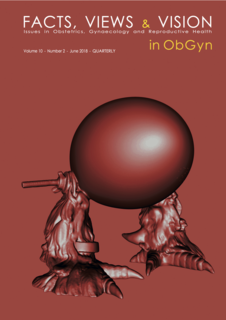Safety and efficacy of two techniques of temporary ovarian suspension to the anterior abdominal wall after operative laparoscopy
abdominal wall, absorbable suture, non-absorbable suture, ovarian suspension, safety and efficacy.
Published online: Feb 20 2019
Abstract
Background: This retrospective study compares the safety and efficacy of temporary ovarian suspension (TOS) to the anterior abdominal wall using absorbable versus non-absorbable suture after operative laparoscopy to elevate the ovaries away from the ovarian fossa to reduce postoperative adhesion development.
Methods: Patients (n=152) underwent TOS to the anterior abdominal wall at the conclusion of surgery between 1998 and 2017. One hundred forty-two patients underwent operative laparoscopy for advanced stages of endometriosis (93.4%) and 10 patients for other indications (6.6%). In 78 patients the ovaries were suspended to the fascia using absorbable 3-0 plain catgut sutures (Group 1). In 74 earlier patients non-absorbable 3-0 mono- lamentous nylon was used to suspend the ovaries to the anterior abdominal (Group 2).
Results: In both groups there was no reported incidence of any major intra-operative complications such as bleeding, or late complications such as infection, hematoma or bowel herniation through the suture loop and its sequalae (bowel obstruction or strangulation). In all patients in both groups the ovaries were present in its anatomical location on transvaginal ultrasound scan, one week after surgery following absorption or removal of the TOS suture. There was no significant difference in clinical pregnancy (34.3% vs 44.2%) and delivery (31.3% vs 36.5%) rates in patients who conceived with non-IVF methods between Group 1 and Group 2 respectively.
Conclusions: TOS to the anterior abdominal wall, using absorbable or non-absorbable sutures, in an attempt to reduce postoperative adhesion development between the ovary and ovarian fossa, is simple, safe, easy to learn, and has potential effectiveness.



